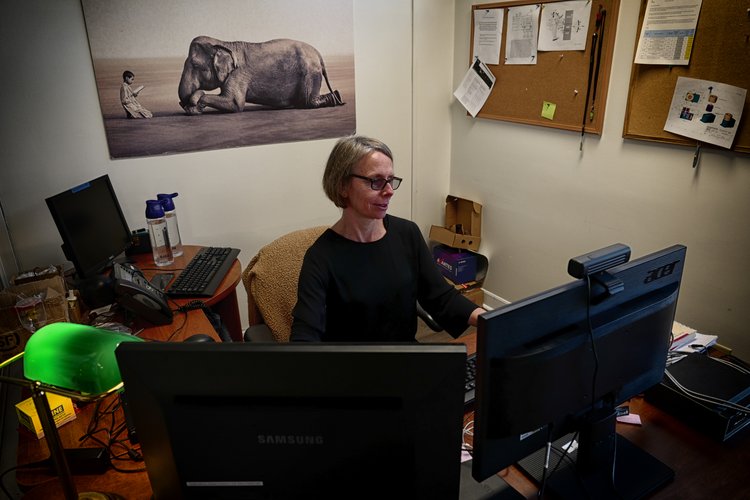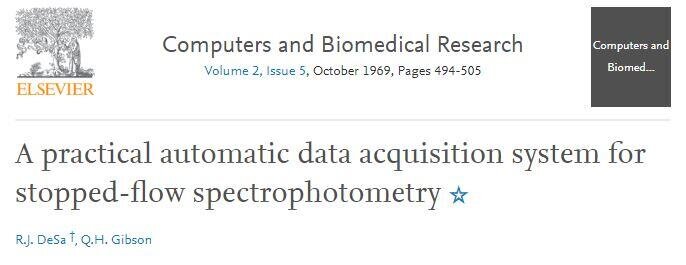A Biased View of Olis Clarity
Wiki Article
The Definitive Guide to Olis Clarity
The chosen wavelength of light is then passed with the example. The detector(Photometer) determines the amount of light absorbed by the sample.
The transmittance is the quantity of light that goes through the example split by the amount of light that beams on the example. The reflectance is the quantity of light mirrored by the sample separated by the quantity of light that radiates on the sample. A can be used to identify unidentified substances, gauge the focus of recognized compounds, and study the communication in between light and issue.
The color of the drinks can additionally be determined and made use of to ensure harmony. Food analysis is an additional typical use.
Facts About Olis Clarity Uncovered

Color evaluation of building items is another typical usage. The whiteness of paint, the reflectivity of aluminum exterior siding, and the illumination of paper can all be measured. For chemical color analysis, It can be used to gauge the absorbance of light by a solution. It can then compute the concentration of a particular chemical in that remedy.
The basic way a spectrophotometer features is by having a light source shine through an example. The light that passes via the example is then spotted and gauged.
If a material absorbs all the light that strikes it and doesn't mirror it, we see that compound as black. The opposite happens with substances that look white -they show all the noticeable light striking them.
The 2-Minute Rule for Olis Clarity
They are fairly basic to use and can be really exact. They can likewise be used to measure a wide array of materials. Here are some benefits: It can be used to measure a qualitative feature. The absorbance of light by an option can be measured and made use of to calculate the focus of a certain chemical in that remedy.
A spectrometer is a term used for any type of instrument that is utilized to research, identify and analytically gauge electromagnetic radiation that is sent out by a material, in order to determine the elemental structure of a material - UV/Vis/NIR. In X-ray fluorescence (XRF) spectrometry, examples are swamped with high-energy X-rays to figure out what a product is made up of
The XRF tools hold several strengths, like any type of maker or tool, they need regular maintenance in order to ensure an optimum efficiency. When a spectrometer is calibrated, it ensures the instrument is 'held up to no' and that no problems exist. Any type of defects will impact the dependability and precision of the information given by the spectrometer, and because of this will certainly give inaccurate results.
An Unbiased View of Olis Clarity
If damaged, unused or left untreated for lengthy periods of time, it is much more likely that a spectrometer will certainly have 'wandered', therefore the significance of regular calibration checks. Wandering might be highlighted if the spectrometer is offering a series of outcomes for one compound, and is as a result offering analyses that are imprecise.
Drift displays are utilized to identify the stability of an XRF spectrometer. They can detect the smallest of issues, which is vital to ensuring the instrument is carrying out at optimal level and providing reliable outcomes. At XRF, we have a vast depth of expertise of sample preparation and high quality guarantee in spectroscopy, and our screens have been produced based on years of expertise in creating products for XRF spectroscopy.

Ultraviolet-visible (UV-Vis) spectroscopy is a widely used strategy in numerous locations of explanation scientific research ranging from microbial culturing, medication recognition and nucleic acid pureness checks and quantitation, to quality assurance in the drink industry and chemical research study. This short article will explain exactly how UV-Vis spectroscopy jobs, how to assess the result data, the method's strengths and limitations and a few of its applications.- Light resource- Wavelength selection- Example evaluation- Discovery, UV-Vis spectroscopy is an analytical method that measures the amount of discrete wavelengths of UV or visible light that are soaked up by or transferred through an example in comparison to a referral or empty example.
Not known Factual Statements About Olis Clarity
Because this spectroscopy method depends on the use of light, allow's initial consider the homes of light. Light has a specific amount of energy which is vice versa proportional to its wavelength.
This is why the absorption of light takes place for different wavelengths in different materials. https://sitereport.netcraft.com/?url=https://olisclarity.com. People are able to see a range of noticeable light, from approximately 380 nm, which we see as violet, to 780 nm, which we view as red. 1 UV light has wavelengths shorter than that of noticeable light to around 100 nm
Xenon lamps are, nevertheless, connected with higher expenses and are less secure in contrast to tungsten and halogen lights. For instruments employing 2 lights, a tungsten or halogen lamp is generally utilized for noticeable light, whilst a deuterium light is the typical source of UV light. As two different lights are required to check both the UV and noticeable wavelengths, the source of light in the instrument must switch over throughout measurement.
Report this wiki page